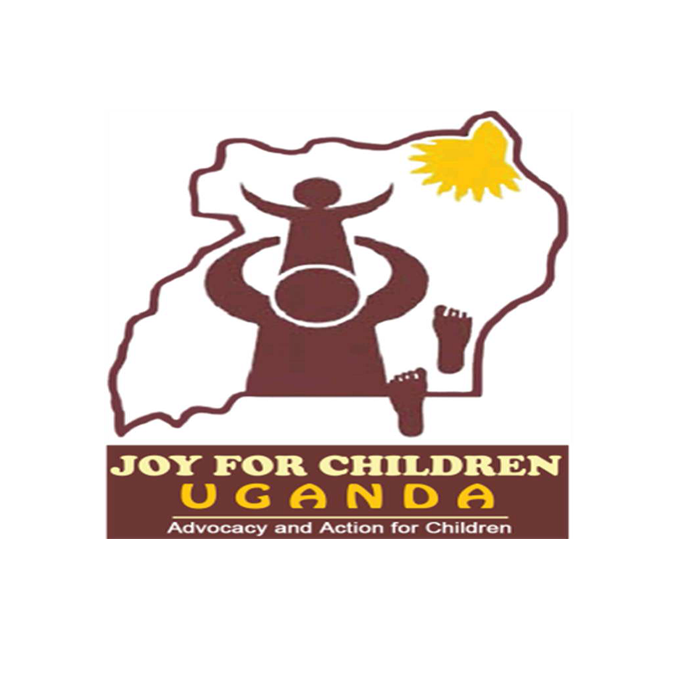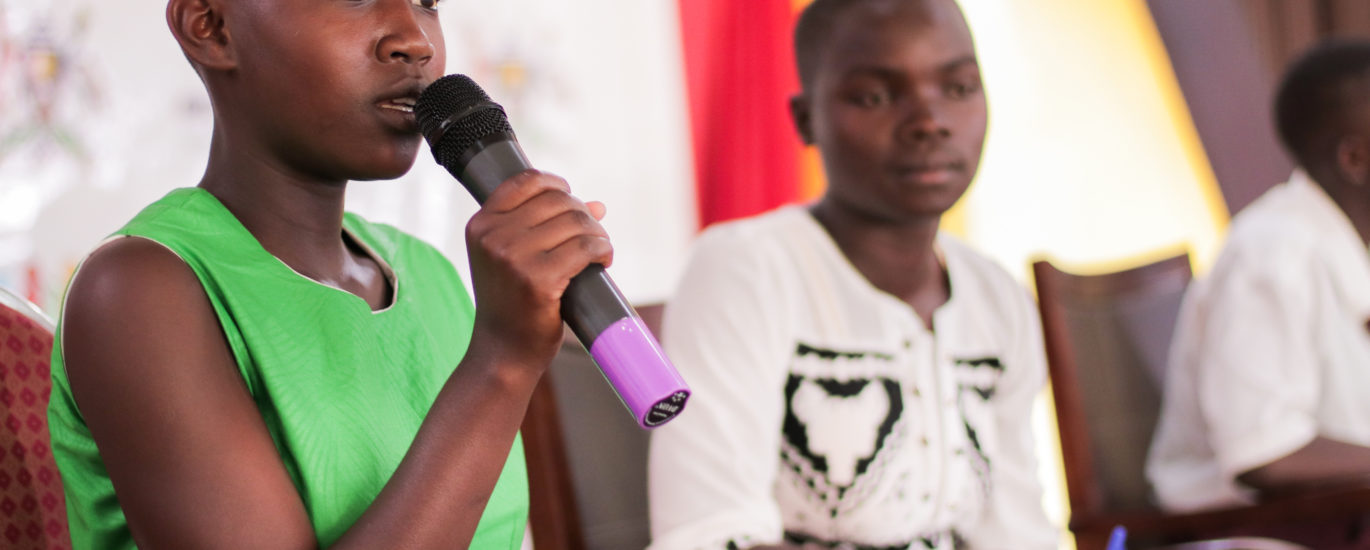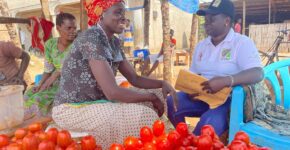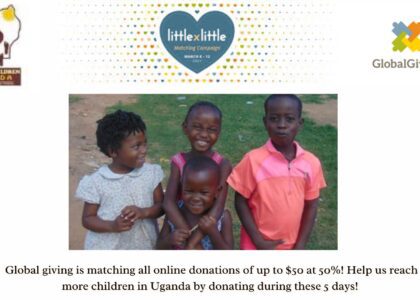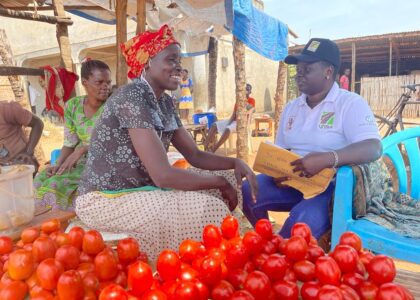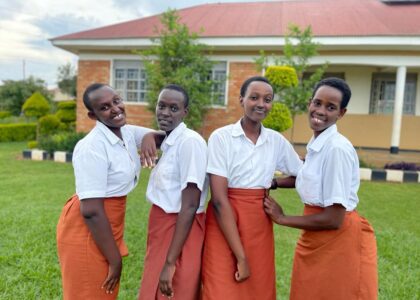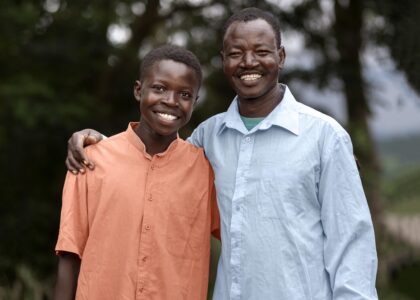Introduction:
In June 2015, the Ministry of Gender, Labour and Social Development with support from UNICEF developed the National Strategy to Ending Child Marriage and Teenage Pregnancy (NSCM&TP 2014/15-2019/2020). The Strategy envisioned creating a society free from Child Marriage and Teenage Pregnancy through strengthening child protection mechanism and enforcement of relevant legislation including Social and Cultural norm change. This strategy further provided guidance on the design and implementation of programmes that were aimed at contributing towards eliminating Child Marriage and Teenage Pregnancy throughout the country.
The key strategic focus areas of the Strategy were: improving policy and legal environment to protect children and promote their rights; improving access to quality sexual and reproductive health, education and child protection services; Mindset change of communities on their knowledge, behaviors and social norms that influence Child Marriage; empowering girls and boys with comprehensive and appropriate information on life skills and Establishing Coordination, monitoring and evaluation mechanisms for effective management of the NSCM strategy
Status of Implementation:
At the end of the Strategy lifetime, it had been disseminated at National, Sub National and Lower Local Governments. The implementation of the previous strategy was premised on a whole government holistic/approach to programming that involved multiple partners and key actors at all levels including government, development partners, civil society organizations, private Sector, religious leaders and cultural leaders.
To-date, progress has been made towards its implementation with the following key milestones:
- Dissemination of the strategy at National, xxx Local and xxx Lower Local Government Level across the country.
- The development of the National Child Policy (2020), Amendment of the Children Act (CAP 59) -2016, National Family Policy (Draft – 2021), National Guidelines for the Prevention of Teenage Pregnancy in School settings in Uganda (2021) and Parenting Guidelines (2018) have all provided a legal, policy and regulatory framework in addressing Child Marriage and Teenage Pregnancy in Uganda.
- Life skills empowerment for girls and boys have been enhance though formal education systems and non-formal education structures at the community levels. Formal school education has been one of the best mechanisms in preventing child marriages and teenage pregnancies as it helps in keeping children at school hence minimizing their exposure to risks of child marriage and teenage pregnancies. Keeping girls in school provided them with school-based mentorship programs that deliver life-skills education, comprehensive sexuality education, guidance and counselling which are offered and better provided in school settings.
- To improve reporting of child abuse cases, the Ministry of Gender, Labour and Social Development has put in place the SAUTI toll free Child helpline 116.The helpline has helped in timely reporting of Child Marriage and Teenage Pregnancy incidences and also enabled timely provision of response services to cases reported.
- At National level, a Monitoring and Evaluation Plan for the NSCM&TP with a domesticated theory of change was developed.
- The National Violence Against Children report (2018)has provided evidence on the prevalence of child marriage and teenage pregnancies in Uganda, which data is currently being used in ECM and TP programming in Uganda.
- Multi-sectoral coordination mechanisms have been established and functioning. These include the National and Sub National Multi-Sectoral Task Force on ECM&TP. Joint monitoring and supervision activities have been conducted during the Strategy lifetime.
- Mindset change interventions through media campaigns and awareness creation forums have been conducted across the country. These included use of both print and electronic platforms in-line with the objectives of the Strategy.
Problem Statement:
Although Uganda’s constitution sets the legal age for marriage at 18 years and the Penal Code criminalizes any type of sexual relations with the person under 18 years of age, 34 percent of women 20-24 years were married or in union before age 18, and 7 percent were married before the age of 15 (Uganda Demographic and Health Survey, 2016). Since marriages in Uganda are not always officially declared and recognized, it is important to compound these statistics with the age of first sexual intercourse and with the percentage of teenagers who have begun childbearing. The 2016 Uganda Demographic and Health Survey findings further indicate that marriage and sex before the age of 18 years affects girls disproportionately compared to boys. Child marriage remains a major social and public health issue in Uganda, with far-reaching implications for the health, education and development of adolescent girls and boys, their children, their natal families, and communities. While the practice of child marriage has declined over the last two decades, its prevalence remains high at 34% (UDHS 2016).
Available literature suggests that girls who marry before age 18 have lower school completion rates, engage in more unpaid Labour and have poorer health outcomes than their peers who remain in school and do not marry in childhood. Young women who marry early are more likely to experience earlier and more frequent childbearing, which in turn increases the risks of maternal morbidity and mortality. Moreover, child marriage is associated with a heightened risk of gender-based violence (GBV), including intimate partner violence (IPV). Married girls also tend to be more isolated, exacerbating their vulnerability and their capacity and/or willingness to report violence at the hands of their male partners and other family members.
Many factors interact to place a child at risk of marriage, including poverty, lack of education and livelihood opportunities, adolescent pregnancy, and gendered social norms and expectations. Poverty influences families to see marriage as a way to secure their daughter’s future, reduce the economic burden on the household and, in some cases, raise needed funds (e.g.bride wealth) and girls may also seek early marriages to escape from poverty within their own families. Poverty has also been linked to transactional sex and early pregnancy. Unplanned pregnancy is a significant driver of child marriage, in part due to the stigma surrounding unwanted motherhood, and the lack of accessible sexual and reproductive health information and services, particularly in rural and remote areas.
It is up on this background, that a new strategy that provides an effective, strategic and multi-sectoral programming on Ending Child Marriage and Teenage Pregnancy is developed to strengthen the interventions put in place by the previous strategy and also respond to the wide spread context of Child Marriage and Teenage Pregnancy.
Justification for developing a revised the NSCM&TP (2021/2022 – 2025/2026.
The 2014/2015 – 2019/2020 NSCM&TP was a 5year Strategy which period ended at the end in June 2020. This by implication means, Uganda currently has no Strategy to End Child Marriage and Teenage Pregnancy. This proposed revision is aimed at addressing this strategic and programmatic deficit/gap.
Secondly, the outbreak of the COVID-19 pandemic in 2020, undermined the implementation of several interventions in reducing child marriage. COVID-19 has contributed to an increase in cases of child marriage as it has exposed the most vulnerable girls to the risk of child marriage and teenage pregnancy. This increase is linked to prolonged school closures, the economic impact of COVID-19 to families, service disruptions especially in access to quality sexual and reproductive health services as during lockdowns, many adolescent girls having limited access to sexual and reproductive health services, including contraceptives. This revised strategy will therefore provide strategic interventions that will address the effects of COVID-19 in ending CM&TP.
In addition, the previous Strategy was developed in line with NDP II which has since ended and the justification for the development of the new strategy that is aligned to the NDP III. This new strategy will therefore provide strategies that will enable the realization of NDP III goal and targets towards ending Child Marriage and teenage pregnancy.
Unlike the previous strategy under Phase I of the Global Programme to ECM, this new strategy will be developed under a Gender transformative framework in designing interventions to end child marriage and teenage pregnancy. It will actively examine, question, and change the rigid gender norms and imbalances of power that advantage boys and men over girls and women. It will aspire to tackle the root causes of gender inequality and reshape unequal power relations that moves beyond individual self-improvement among girls and women towards redressing the power dynamics and structures that serve to reinforce gendered inequalities.
